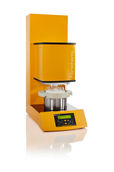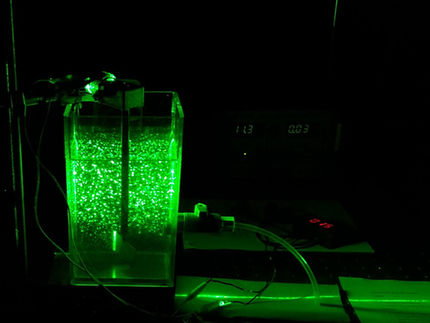First 'nanorust' field test slated in Mexico
Guanajuato will be first to try Rice's arsenic-cleansing 'nanorust'
Rice University researchers announced that the first field tests of "nanorust," the university's revolutionary, low-cost technology for removing arsenic from drinking water, will begin later this year in Guanajuato, Mexico.
"Mexico's debating the adoption of more stringent national standards for allowable levels of arsenic in drinking water, and officials in Guanajuato are looking ahead to explore ways they might meet stricter new standards," said nanorust inventor Vicki Colvin, Rice's Pitzer-Schlumberger Professor of Chemistry and director of Rice's Center for Biological and Environmental Nanotechnology (CBEN).
Colvin and CBEN faculty, staff and students began visiting Guanajuato last fall to prepare for the upcoming tests. Guanajuato, which has a population of 80,000, is the capital of Guanajuato state. It is about 230 miles northwest of Mexico City.
Arsenic is a colorless, odorless, tasteless element, and prolonged exposure to dangerous levels of arsenic can lead to skin discoloration, sickness and cancer. Arsenic-poisoned drinking water is a global problem, affecting tens of millions of people in communities in Asia, Africa, North America, South America and Europe.
CBEN's arsenic-removing technology is based on the unique properties of particles called "nanorust," tiny bits of iron oxide that are smaller than living cells. In 2006, Colvin and CBEN colleague Mason Tomson, professor in civil and environmental engineering, published with their students the first nanorust studies. Their initial tests indicated nanorust -- which naturally binds with arsenic -- could be used as a low-cost means of removing arsenic from water.
Qilin Li, an assistant professor of civil and environmental engineering and CBEN faculty expert in water treatment, said Rice's team plans to test nanorust-coated sand. The material will be used in sand filters to treat groundwater from wells. The water treated with nanorust will be kept separate from the water that is released for human consumption, Li said.
"Our studies of nanorust have progressed rapidly over the past three years, but in order to move this technology toward practical application there is really no substitute for this type of field test," Li said.
Pedro Alvarez, the George R. Brown Professor of Engineering and chair of the Department of Civil and Environmental Engineering, said, "One collateral benefit of the nanorust filters is that they may also help remove water-borne viruses that are responsible for a wide variety of gastrointestinal diseases."
Most read news
Topics
Organizations
Other news from the department science
These products might interest you

Microbiology QC products by Cytiva
Efficient membrane filtration for food and beverage testing
Optimize your laboratory tests with versatile filtration systems

FIBRETHERM by C. Gerhardt
Automatic Fibre Extraction for Feed Analysis
FIBRETHERM from C. Gerhardt: Efficient – Precise – Method-Compliant

VICI Jour Katalog 15INT by VICI
The VICI Jour Catalog - Accessories for (U)HPLC and Liquid Handling
Capillaries, Tubing, Fittings, Filters, Safety-Products, Tools and much more

Hahnemühle LifeScience Catalogue Industry & Laboratory by Hahnemühle
Wide variety of Filter Papers for all Laboratory and Industrial Applications
Filtration Solutions in the Life Sciences, Chemical and Pharmaceutical Sectors

Get the analytics and lab tech industry in your inbox
By submitting this form you agree that LUMITOS AG will send you the newsletter(s) selected above by email. Your data will not be passed on to third parties. Your data will be stored and processed in accordance with our data protection regulations. LUMITOS may contact you by email for the purpose of advertising or market and opinion surveys. You can revoke your consent at any time without giving reasons to LUMITOS AG, Ernst-Augustin-Str. 2, 12489 Berlin, Germany or by e-mail at revoke@lumitos.com with effect for the future. In addition, each email contains a link to unsubscribe from the corresponding newsletter.

























































